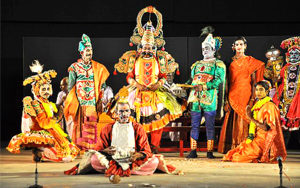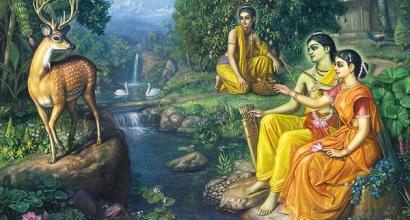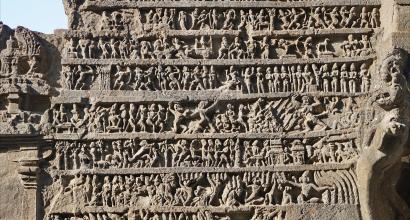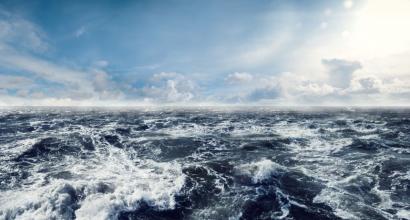Yakshagana is a term, which although collectively applies to regional performing arts of Karnataka and Andhra, in the recent years, it has been used synonymously with ‘Paduvalapaaya’ which is practiced in the Karavali and Malenadu regions of coastal Karnataka. The current article uses the word ‘Yakshagana’ in this popular sense, but we must keep the generic significance of the term in our mind. The current article is an attempt at doing a comparative study of different art forms of Karnataka, Andhra, Tamil Nadu and Kerala, and the popular ‘Paduvalapaaya’, i.e., Yakshagana, as we know it today. Art forms of Karnataka such as Doddaata, Moodalapaaya, Ghattada Kore, Kelike, of Andhra such as Kuchupudi, Chindu, Torpumelam, Maalayakshagaanam, of Tamil Nadu such as Melutturu Bhagavatamelam, Terukkuttu, of Kerala such as Koodiyattam, Krishnanaattam and Kathakali can be seen as siblings of Yakshagana. This article attempts only at looking at the fundamental and governing philosophy which is common to all the art-forms. Moreover, the analysis is from the perspective of aesthetics and is not linked to cultural anthropology, sociology, politics or economics of the art-forms.
All the art-forms of Southern India mentioned above, can be classified based on two communication techniques (dharmi), known as the Loka-dharmi (realistic) and Naatya-dharmi (stylized), independent of their regional flavours. We can get a wholesome perspective when we also look at them from the point of view of the four modes of abhinaya – Aharya, Angika, Vaachika and Saattvika. This is so because, the dharmis are rooted in the modes of abhinaya.
At the level of costumes (aharya), all these art forms are pronouncedly stylized, i.e., are rich in Natya-dharmi. Among these, the most stylized are the performing arts of Kerala, followed by Terukuttu, Chindu, Maala, Turpu and Yakshagaana, with slightly lesser degrees of stylization. Doddaata, Mudalapaaya, Kelike, Ghattada Kore too fall into the same category. The costumes used in Tenkutittu, i.e., the southern variety of Yakshagana, although are similar to that of Kathakkali, have lost their exuberance in the recent years, due to loss of rigour. Although Badagutittu, the northern variety of Yakshagana has retained some rigour, the classicality has gone down in some of the professional performing troupes. However, several teams, which have taken up Yakshagana mainly as a hobby, have retained classicality and have developed the art too. Kuchupudi Bhagavatamela and Melattur Bhagavatamela have distanced themselves from Yakshagana-like costumes and due to the influence Bharatanatyam (Sadir), theater art and mythological films, they have evolved their own styles of costumes. These costumes have both merits and demerits
.Dance forms such as Doddaata, Mudalapaaya, Ghattada Kore, Kelike, Terukoottu, Veethinaataka have started using costumes with no aesthetic sense, which has brought down their classicality. In this regard, it is commendable that the dance forms of Kerala have ritualistically retained their traditional costumes. It is to be noted, however, that due to exuberance of the costume in those forms, sattvikaabhinaya has no place and even angikaabhinaya has got limited to just hand gestures and movement of eyes. From this point of view, it would not be wrong to say that the Badagutittu variety of Yakshagana has a more comfortable costume and is more aesthetic compared to the Tenkanatittu variety.
Similarly, Kuchupudi Bhagavadamela and a couple of other dance forms too have refined their costumes which has brought more focus on angika and Saattvikaabhinaya. The costume used in Koodiyattam of Kerala allows for some flexibility for angikaabhinaya and is conducive for saattvikaabhinaya too. However, it is a pity to see that even with this flexibility, Koodiyattam has not exploited these advantages well and has remained rather plain. In summary, in all of these art forms belonging to the Yakshagana family, angikaabhinaya is essentially of the Natya-dharmi kind, i.e., stylized. The Paduvalapaaya of Karnataka stands in-between these extremes, which sometimes bolsters the Rasa and at other times, does not.
Adapted by Arjun Bharadwaj from the original Kannada

















































